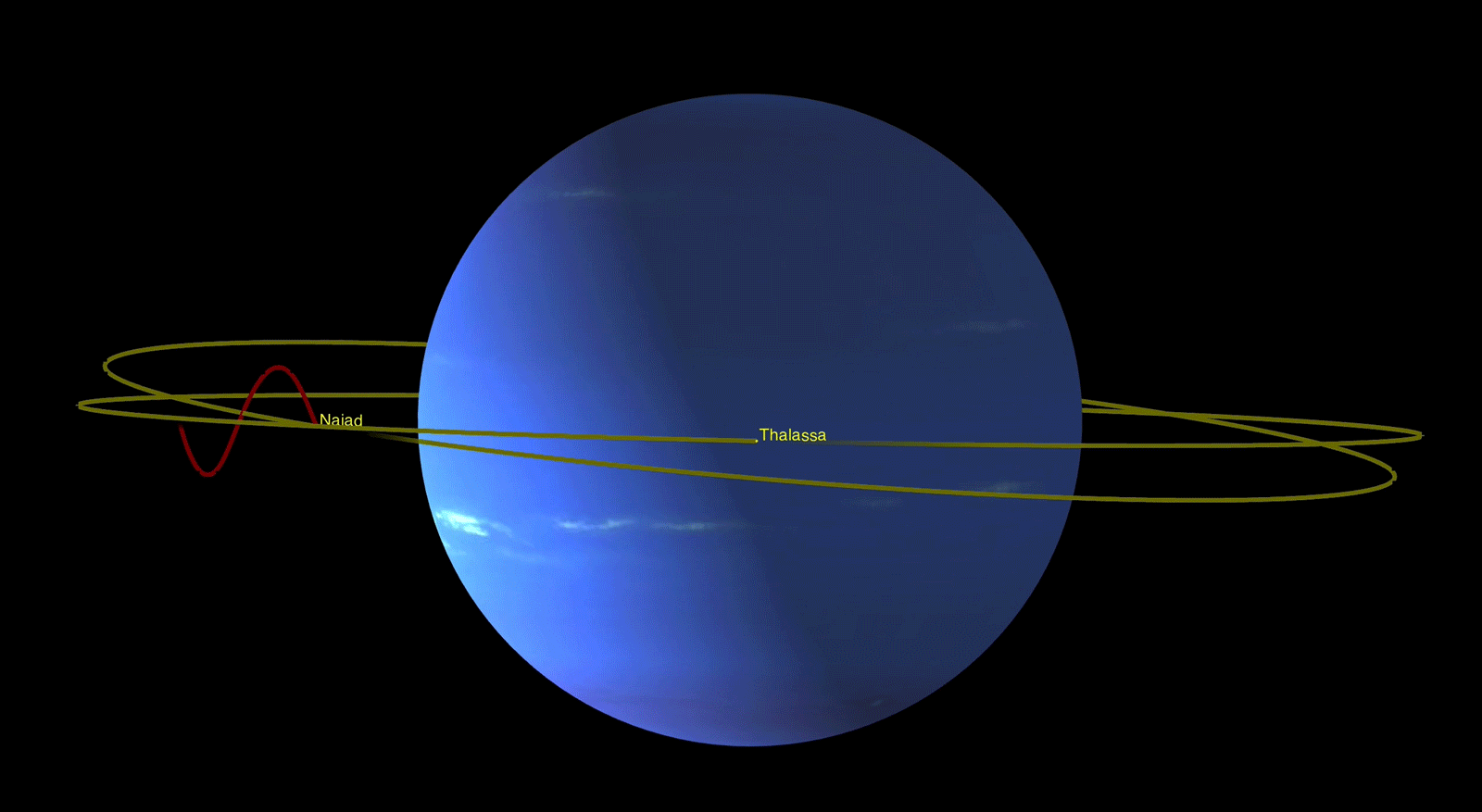A team of scientists led by Marina Brozovic at NASA's Jet Propulsion Laboratory has discovered that two of Neptune's innermost moons are locked in a never before seen orbital "dance of avoidance" that keeps them from colliding. The tiny moons Naiad and Thalassa regularly pass within 2,200 mi (3,540 km) of one another, but their orbits interact in such a way that they remain stable.
If you go by school science books, orbits seem like very simple things. The Moon goes around the Earth more or less in a circle, the Earth goes around the Sun in a similar circle, as do the other planets all set on about the same plane. The only outliers are the comets with their long, elliptical loops from the outer to the inner solar system.
Of course, orbital dynamics are much more complex than that. As many different bodies moving in very complex trajectories pull on one another, they can generate some surprising phenomena – planets and moons are formed, get captured by larger stars or planets, and get locked into or thrown out of orbit.
One example that hasn't been seen before is the Neptunian moons Naiad and Thalassa, which have orbits that are only 1,150 mi (1,850 km) apart. Based on observations from ground observatories, Voyager 2, and the Hubble Space Telescope, it's been established that the delicate dance of these two bodies is the first fourth-order resonance orbit seen.
An orbital resonance occurs when two bodies have orbital periods that are in just the right ratio to either reinforce a stable orbit or hurl one or more body out of its orbit. It's similar to how regular pushes on a playground swing can either cause it to move back and forth with a regular motion, slow to a stop or go faster and faster until the rider gets tossed out.
In the case of the little Neptunian moons, their periods and orbital tilt produce a particular resonance. Naiad makes one revolution every seven hours and Thalassa every seven and a half hours. Every time Naiad laps Thalassa four times, it moves above and below its counterpart in a repetitive up, up, down, down zigzag pattern, stabilizing the orbits.
"We refer to this repeating pattern as a resonance," says Brozovic. "There are many different types of 'dances' that planets, moons and asteroids can follow, but this one has never been seen before."
The oblate-shaped moons are about 60 mi (100 km) in diameter and are the innermost of Neptune's 14 known moons. How they ended up in their odd orbits isn't clear, but the team suspects that it was caused by Neptune capturing its largest moon, Triton, which disrupted the original moon system and caused the present moons and rings to form later from the debris.
"We suspect that Naiad was kicked into its tilted orbit by an earlier interaction with one of Neptune's other inner moons," says Brozovic. "Only later, after its orbital tilt was established, could Naiad settle into this unusual resonance with Thalassa."
The animation below shows the orbital resonance in action.
The research was published in Icarus.
Source: NASA





